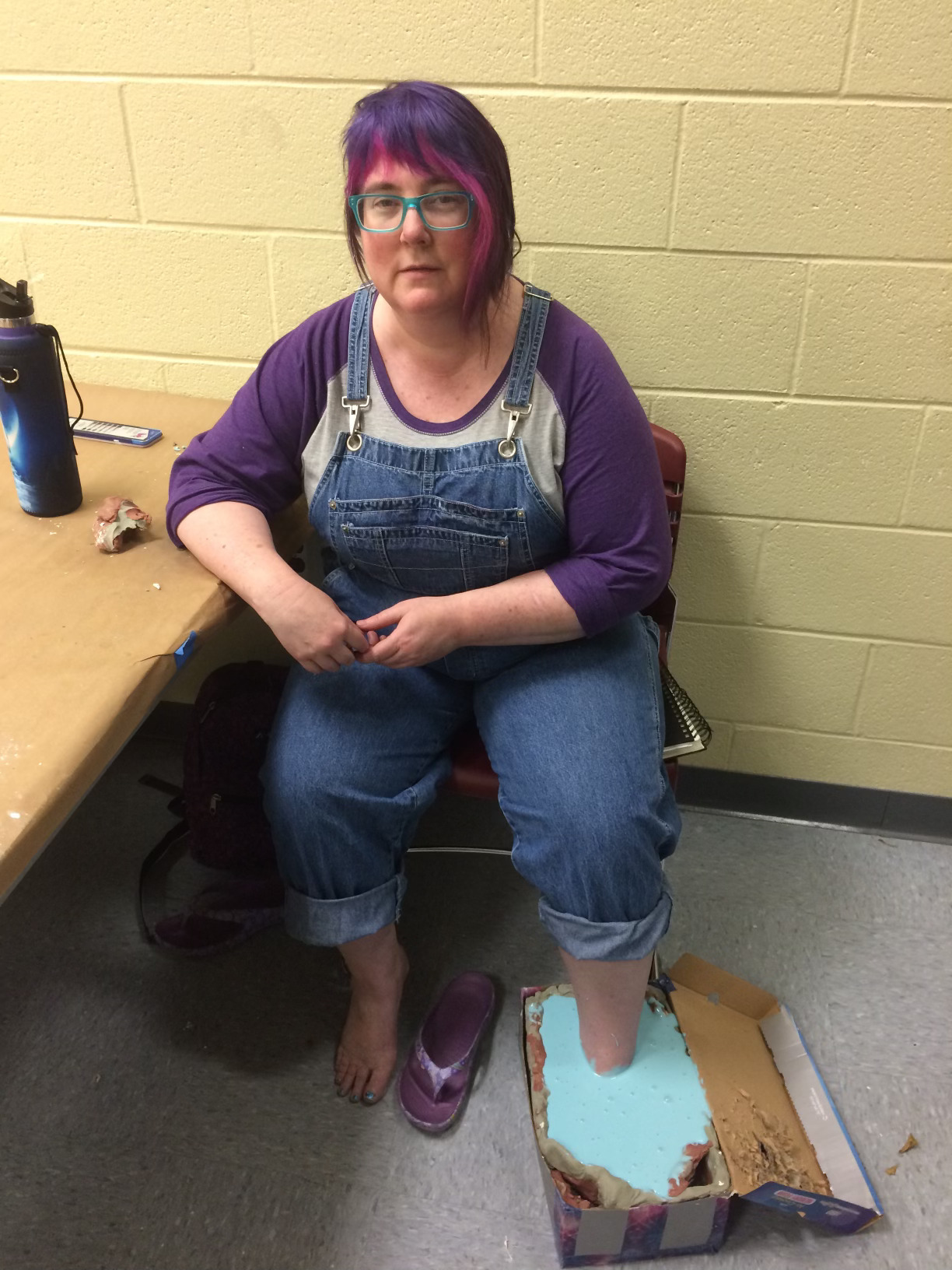August 21, 2024 | By Bridget Pemberton-Smith, ATR-BC
I first got to know Laura when she came to work as an intern at the Art Therapy Institute (ATI) in North Carolina and I was her internship site supervisor. Despite coming to the field later in her career, she was all in as an art therapist from the moment she started—and a passionate artist too!
Halfway through her second year at ATI, the COVID-19 pandemic hit. ATI’s community-based structure, which normally sent art therapists to schools, retirement communities, hospitals, was impossible to maintain during the pandemic. When the world shut down, ATI’s work was put on hold and with it Laura’s ability to earn the required number of clinical hours—delaying her graduation.
Anatomical Heart Series
By Laura Haywood-Cory

When Laura finally graduated, she was beyond thrilled to be a full-fledged art therapist. While we would have been delighted to have her as part of the team at the Art Therapy Institute, it unfortunately had to close permanently—and she began searching for an art therapy position in North Carolina. At this point, Laura faced an even bigger challenge: She learned that the North Carolina Board for Licensed Clinical Mental Health Clinicians were now requiring people applying for the associate licensed clinical mental health clinician’s license (LCMHC-A) to have graduated from a CACREP-accredited institution. And while most art therapy programs are CAAHEP accredited, very few have CACREP accreditation.
Even though Laura had completed all the courses and clinical hours required for the license, Laura was ineligible to apply for her LCMHC-A license due to the lack of CACREP accreditation. Without a counseling license, or the possibility of an art therapy license, it became increasingly difficult for Laura to find a job that had fair compensation for a master’s level clinician.
After a lot of soul searching, Laura decided to expand her job search beyond North Carolina. Laura eventually found her dream job in Portland, Oregon and moved across the country. I’m so happy that she is thriving there, working with an agency that serves diverse populations and specializes in reaching the LGBTQ+ community. However, this career decision has come with costs. Laura will be living apart from her husband Paul for over a year until he is eligible to retire from his Wake County school position in 2025. In addition, she now faces the challenge of caring for her two aging parents living in Charlotte, NC. And she can no longer lean on her professional and alumni community.
To practice as an art therapist, Laura literally had to uproot her life, leaving behind her family, friends, professional network, and the state she had called home for almost her entire life. While she is working on building a community in Portland, she told me she often feels lonely and wishes she could have stayed in the community she worked so hard to build.

“I put my foot in goo for the sake of art.”
By Laura Haywood-Cory
To me this photo really is a perfect metaphor for licensure in NC…Without being able to apply for the LCMHC as art therapists did in the past, art therapists are now “stuck in a hard place.”
Our art therapy community in North Carolina is now missing a valuable member, but even more importantly, the state has lost a truly gifted art therapist and mental health clinician. Currently, there are 3.5 million North Carolinians living in mental health care professional shortage areas who could have benefited from Laura’s passion for art therapy and helping others.
Sadly, I fear that this trend will only continue until North Carolina licenses art therapists. As our state continues to lose art therapists already living here, art therapists who are considering moving to North Carolina are second-guessing their plans due to the unwelcoming environment for art therapists.
As a native North Carolinian, this breaks my heart. North Carolina has a rich history in the arts and is home to world-class hospitals like Duke University and UNC Hospitals. Art therapy should be flourishing here! But the challenges Laura faced aren’t unique to emerging art therapists in this state. Across the country, art therapists unable to obtain an art therapy license are also encountering the added roadblock of the National Counseling Exam, which requires graduates to come from CACREP-accredited schools and further restricts art therapists’ ability to earn counseling licenses.
But this doesn’t have to be the case. An art therapy license would provide a pathway to licensure for art therapy graduates, allowing them to practice in the state even if their degrees don’t meet CACREP requirements. North Carolina has the potential to create a thriving environment for the field of art therapy. However, it has not been realized because we do not have a way for art therapists to be licensed. (At least not yet! 😊) So let’s continue advocating for licensure in our state—not just for Laura, but for all art therapists, and for the sustainability of our profession. And as soon as we secure art therapy licensure in North Carolina, I’ll be working on getting Laura back to the Tar Heel State!
Get Involved!
Currently, the North Carolina Art Therapy Association is working to add art therapy as a licensed profession under the Healing Arts Commission Bill which will be reintroduced this fall. The bill would license a variety of “healing arts” and currently includes music therapy, reflexology, and homeopathic doctors. To get involved in North Carolina’s advocacy efforts, you can reach out to Meredith Ashley in the AATA National Office. We hold monthly advocacy meetings on Zoom on the last Thursday of each month. Join us!
